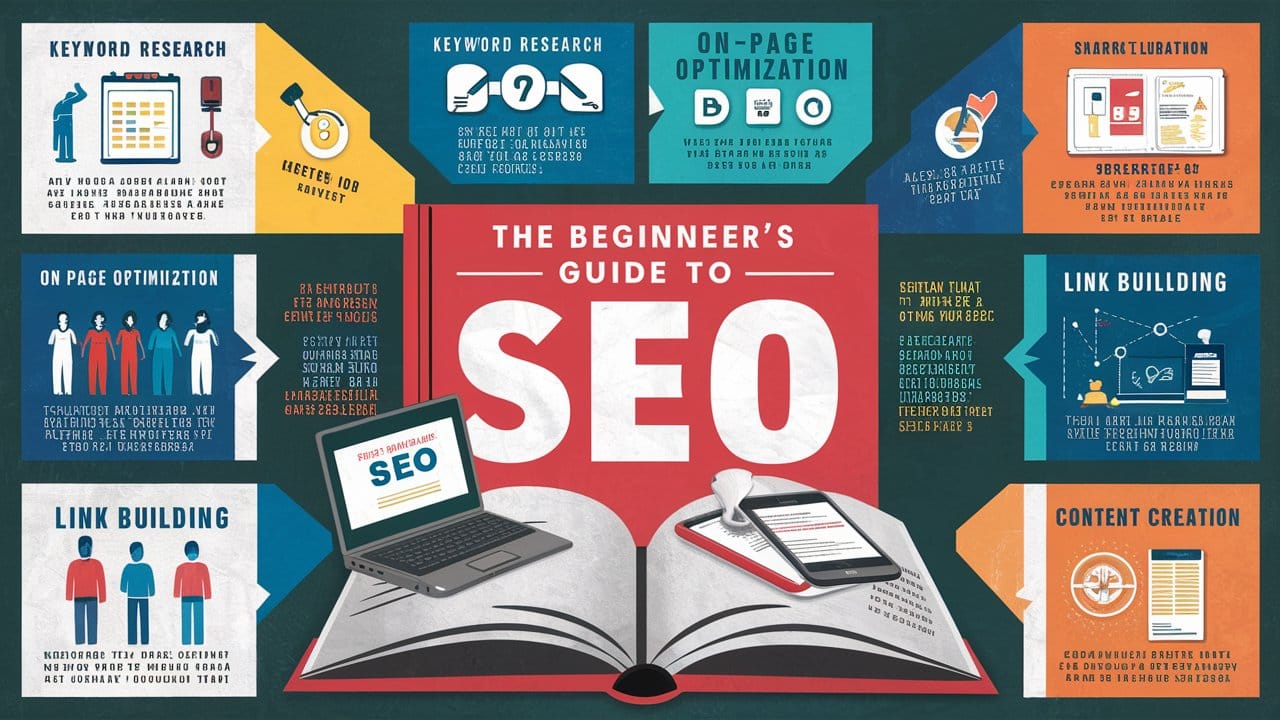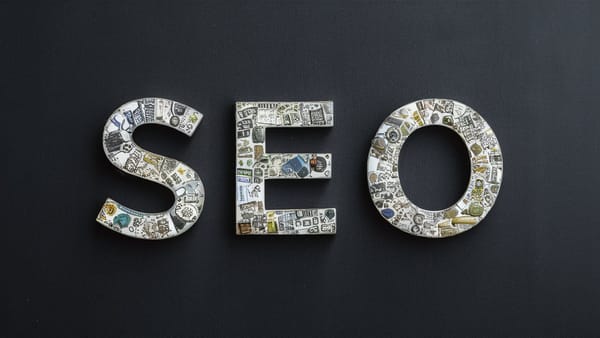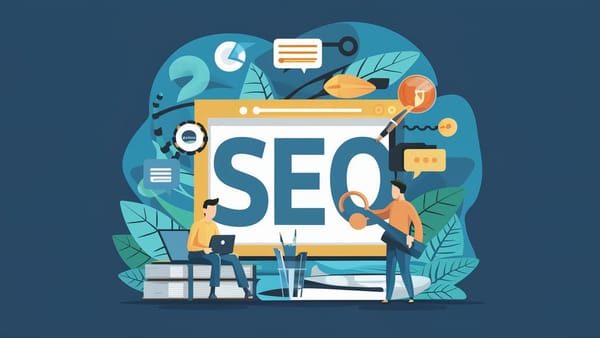SEO vs. SEM: Understanding the Difference and How They Work Together
SEO and SEM are two key pillars of digital marketing, each with distinct roles yet complementary functions
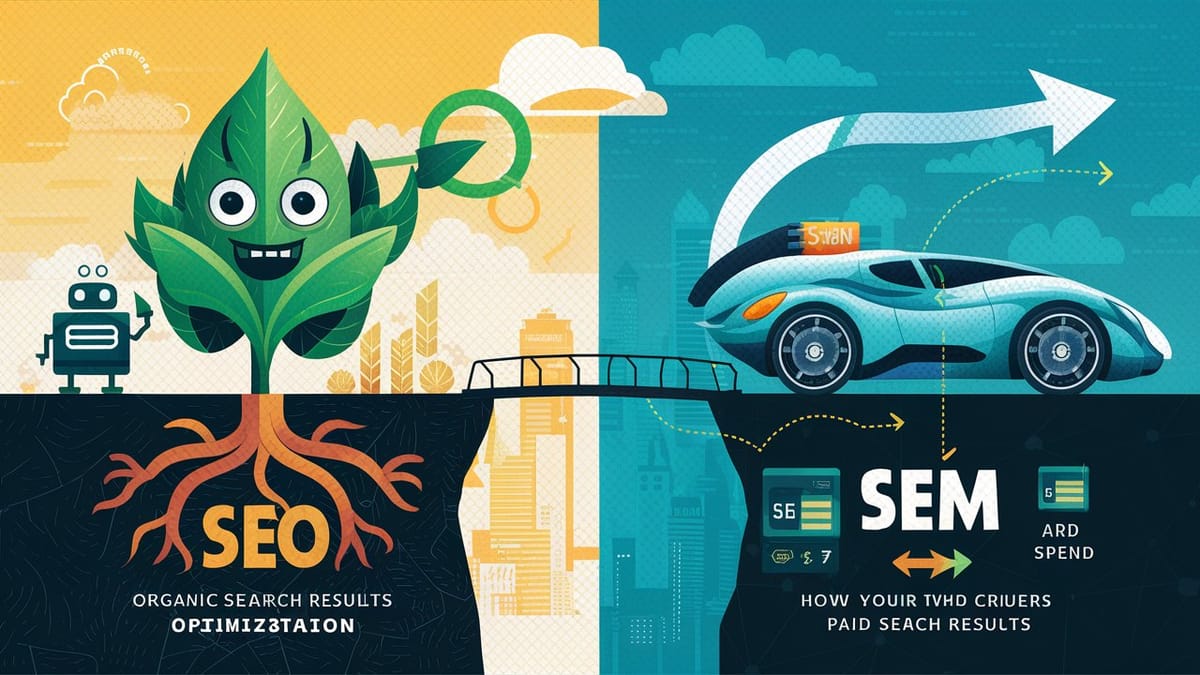
In the ever-evolving landscape of digital marketing, two terms frequently emerge at the forefront of strategy discussions: SEO (Search Engine Optimization) and SEM (Search Engine Marketing). These tactics are cornerstone elements in driving traffic, increasing visibility, and ultimately, propelling the success of online platforms. However, despite their common objectives, SEO and SEM employ distinct approaches and mechanisms to achieve their goals. Understanding the nuances, benefits, and collaborative potential of these strategies can significantly enhance your digital marketing efforts.
Introduction to SEO and SEM
The digital age has ushered in an era where the online presence of a business is as crucial as its physical storefront. In this context, SEO and SEM have emerged as vital tools for enhancing online visibility. While they share the common goal of boosting web traffic, their approaches and implications differ significantly. SEO focuses on optimizing a website to improve its organic search rankings, whereas SEM encompasses broader strategies including paid search ads. Together, they form a comprehensive search strategy that can significantly enhance online presence and performance.
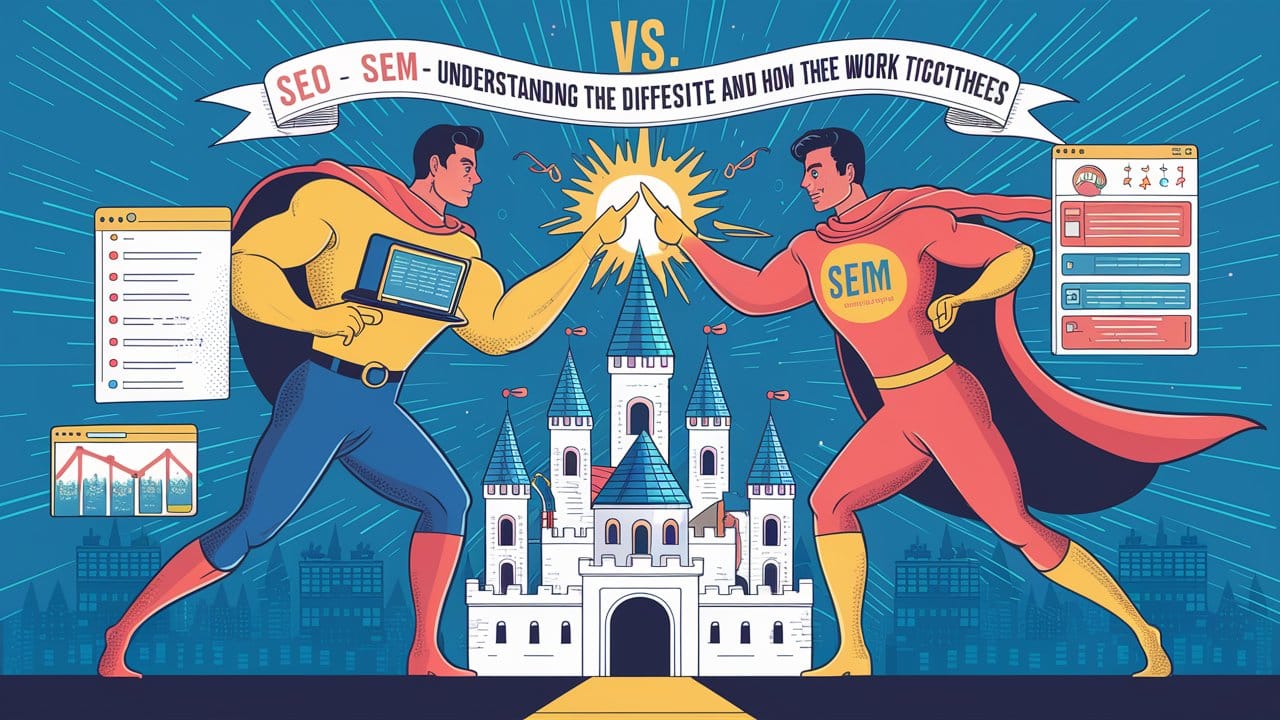
What is SEO?
SEO stands for Search Engine Optimization, a methodology of strategies, techniques, and tactics used to increase the amount of visitors to a website by obtaining a high-ranking placement in the search results page of a search engine (SERP) — including Google, Bing, Yahoo, and other search engines. It's a natural, or organic, way of improving visibility and is foundational to understanding digital marketing.
SEO involves various components from on-page elements like content quality and keyword optimization to off-page elements like link building and social signals. Each aspect is meticulously analyzed and optimized to ensure the website conforms to search engine algorithms, thereby improving its likelihood of ranking higher in search results. The process is ongoing and requires consistent effort and adaptation to the ever-changing landscape of search engine algorithms.
The importance of SEO stems from the way consumers interact with search engines. The majority of online experiences begin with a search engine, and appearing on the first page of search results significantly increases the likelihood of being visited by potential customers. Therefore, implementing effective SEO strategies becomes imperative for businesses seeking to enhance their online visibility and capture organic traffic.
How does SEO work?
Understanding the mechanics of SEO involves delving into the intricacies of search engine algorithms. These algorithms are designed to crawl, index, and rank websites based on relevance and authority. SEO works by optimizing various elements of a website, including its content, structure, and performance, to meet the criteria set forth by these algorithms.
At its core, SEO starts with keyword research, identifying the terms and phrases that potential customers use to search for products or services. By integrating these keywords into high-quality, relevant content, a website can improve its relevance for these terms. Furthermore, SEO emphasizes the importance of website structure and user experience, ensuring that sites are navigable, load quickly, and are mobile-friendly.
Link building is another critical component of SEO, where the goal is to accrue high-quality inbound links from other reputable websites. These links serve as votes of confidence in the eyes of search engines, increasing a site’s authority and its position in search results. Through these concerted efforts, SEO enhances both the visibility and credibility of a website, making it more likely to be visited by users.
Benefits of SEO
The advantages of implementing a robust SEO strategy are manifold. Primarily, SEO boosts website visibility and organic reach, making it easier for potential customers to find your business online. By ranking higher in search results, your website can capture a larger share of clicks, driving more traffic without the need for paid advertisement.
Moreover, SEO targets quality traffic through keyword relevance, attracting visitors who are actively searching for information, products, or services related to your business. This increases the likelihood of conversion, as the traffic is more aligned with your offerings. Additionally, SEO fosters trust and credibility. Websites that appear on the first page of search results are often perceived as more trustworthy and authoritative by users.
Another significant benefit of SEO is its cost-effectiveness. Unlike paid search strategies, organic search traffic does not incur costs per click, allowing businesses to attract visitors without ongoing advertising expenses. Furthermore, the effects of SEO are long-lasting, with well-optimized websites maintaining their rankings and continuing to attract traffic over time.

What is SEM?
SEM, or Search Engine Marketing, is a broader digital marketing strategy that encompasses SEO and goes beyond it to include paid search advertising. SEM involves purchasing ads that appear on the search engine results pages (SERPs) when specific keywords are searched. These paid advertisements are commonly referred to as pay-per-click (PPC) ads, with advertisers paying a fee each time their ad is clicked.
The primary goal of SEM is to increase website visibility on search engines through both organic optimization and paid advertising. This dual approach allows businesses to maximize their visibility and attract more traffic in a shorter timeframe. SEM is particularly useful for businesses looking to gain quick exposure, launch new products, or target specific demographics or geographic regions.
How does SEM work?
SEM operates on a pay-per-click (PPC) model, where advertisers bid on keywords relevant to their target market. The position of the ads is determined by both the bid amount and the quality score of the ad, which takes into account the relevance and landing page experience. When a search query matches the keywords bid on, the ads may appear above or beside the organic search results.
Creating effective SEM campaigns requires comprehensive keyword research to identify the terms that potential customers are using. Advertisers must craft compelling ad copy and design landing pages that provide a positive user experience and encourage conversions. Additionally, ongoing campaign management and optimization are necessary to adjust bids, refine ad copy, and improve overall campaign performance.
The benefits of SEM are immediate visibility and the ability to drive targeted traffic quickly. It offers flexibility in targeting, allowing advertisers to specify demographics, geographic locations, and even times of day for their ads to appear. SEM also provides measurable results, with detailed analytics available to track performance, conversions, and return on investment (ROI).
Benefits of SEM
SEM offers several distinct advantages for businesses looking to enhance their online presence. Its most notable benefit is the ability to achieve immediate visibility on search engines. Unlike SEO, which can take months to yield results, SEM can place your website at the top of search results almost instantaneously, providing quick exposure and traffic.
Furthermore, SEM allows for precise targeting. Advertisers can tailor their campaigns to reach specific audiences based on demographics, interests, location, and even the devices they use. This level of targeting precision ensures that ads are shown to users who are most likely to be interested in the product or service, increasing the likelihood of engagement and conversion.
Another significant advantage of SEM is its scalability and control. Advertisers can set budgets for their campaigns, adjust bids for specific keywords, and pause or stop their ads at any time. This flexibility enables businesses to manage their advertising expenses effectively while maximizing their return on investment. Additionally, SEM provides valuable insights through detailed analytics, allowing advertisers to measure the effectiveness of their campaigns and make data-driven decisions to optimize performance.

SEO vs. SEM: Key differences
While SEO and SEM share the common goal of enhancing website visibility and attracting traffic, they differ in their approaches, costs, and timelines for achieving results. SEO focuses on optimizing a website to rank higher in organic search results, relying on keyword optimization, content quality, and site performance. It is a long-term strategy that requires ongoing effort but provides sustainable results without the direct costs associated with clicks.
On the other hand, SEM includes SEO tactics but primarily revolves around paid search advertising. It offers immediate visibility and the potential for quick traffic increases, with advertisers paying for each click on their ads. SEM provides more control over when and where ads appear, allowing for precise targeting and flexible budgeting. However, the costs can add up, and the visibility is contingent on continued investment in the campaigns.
How SEO and SEM work together
Despite their differences, SEO and SEM are not mutually exclusive and can be highly effective when used in conjunction. Integrating SEO and SEM strategies allows businesses to dominate both organic and paid search results, maximizing visibility and capturing a larger share of search traffic.
Utilizing SEO and SEM together provides a comprehensive search marketing strategy that leverages the strengths of each approach. SEO lays the foundation for long-term success, building website authority and attracting organic traffic. Concurrently, SEM offers immediate visibility and the ability to target specific audiences or promotional efforts, filling the gaps while SEO efforts mature.
By employing both strategies, businesses can achieve a balanced approach, capitalizing on the quick wins of SEM while building sustainable organic growth through SEO. This integrated approach enhances overall search visibility, drives more traffic, and leads to better conversion rates, providing a competitive edge in the digital marketplace.
Conclusion
In the digital marketing realm, SEO and SEM are indispensable strategies for enhancing online visibility and driving traffic. While they employ different approaches—SEO focusing on organic growth and SEM on paid advertising—both are crucial for a comprehensive search marketing strategy. Understanding the nuances, benefits, and synergies of SEO and SEM allows businesses to leverage these tactics effectively, maximizing their online presence and achieving their marketing objectives.
As the digital landscape continues to evolve, staying informed and adaptable in your SEO and SEM efforts will be key to sustaining success. By embracing the complementary nature of these strategies, businesses can enhance their visibility, attract more targeted traffic, and ultimately, drive greater success in the online world.
FAQs:
1. Can SEO and SEM be used for all types of businesses? Yes, SEO and SEM can be effectively utilized by businesses of all sizes and types, from local stores to global enterprises. The key is to tailor the strategies to fit the specific needs and objectives of the business.
2. How long does it take to see results from SEO and SEM? SEM can produce immediate results as ads start to appear as soon as the campaign goes live. SEO, however, is a long-term strategy, with significant improvements often taking several months to materialize.
3. Is it necessary to use both SEO and SEM? While not strictly necessary, using both SEO and SEM can provide a more comprehensive search strategy, maximizing visibility and traffic from both organic and paid channels.
4. How do I decide how much to spend on SEM? Budgeting for SEM depends on various factors, including your marketing objectives, the competitiveness of your industry, and your overall marketing budget. It's important to start with a manageable budget, analyze performance, and adjust as needed.
5. Can I manage SEO and SEM on my own, or should I hire a professional? While it's possible to manage SEO and SEM with in-house resources, the complexity and evolving nature of search marketing often require specialized knowledge and skills. Hiring a professional or agency can provide expertise and insights to maximize the effectiveness of your search marketing efforts.
